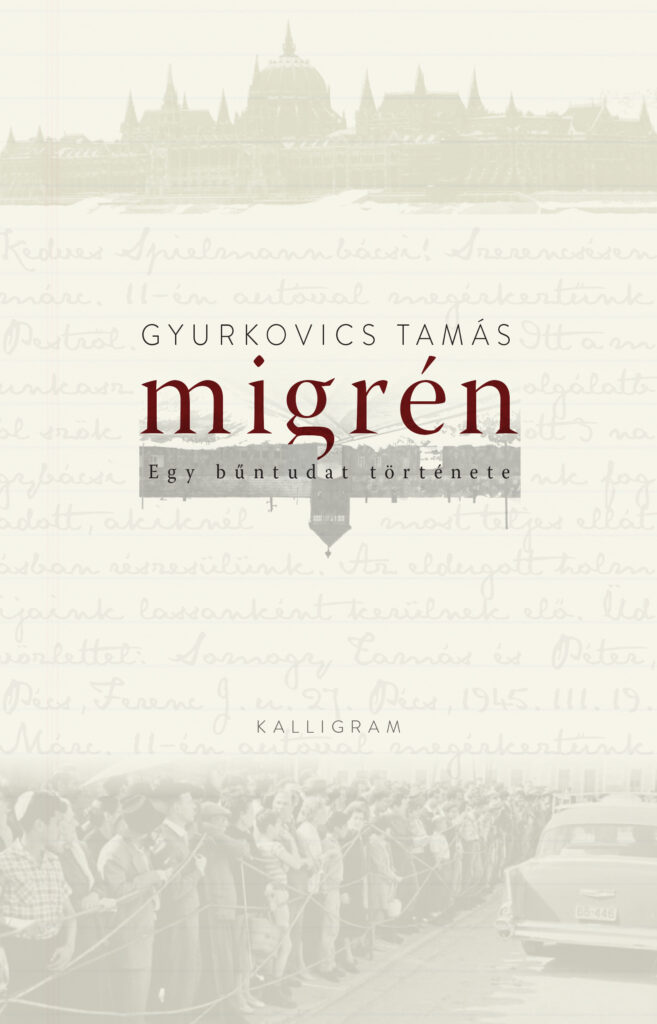
Author: Tamás Gyurkovics
Original title: Migrén – Egy bűntudat története
Title in English: Migraine – The story of a guilty conscience
Year of publication: 2019
Publisher: Kalligram
Number of pages: 280
Rights sold: France, Italy, German
This novel is part of the continuing effort to understand the traumas of the Holocaust. It approaches this task from an unusual perspective. Though the protagonist, Ernő Spielman, is a fictional character, his story is comparable to the story of Zvi Spiegel, who was the kapo for twins (“Zwillingsvater”) in Auschwitz-Birkenau and who brought forty children home from the extermination camp. The novel, which draws on materials which Gyurkovics discovered when writing his previous book, Mengele bőröndje (“Mengele’s Suitcase”), offers a moving portrayal of the protagonist’s many struggles, which the passage of time does not make any easier. When we are introduced to Spielmann, he is already living in Israel. We meet his family and the lively world which surrounds him. We find ourselves in the middle of the birth of the Jewish state, which is hardly free of conflict, but Spielmann’s anxiety is palpable, and it causes increasingly unbearable migraines. The subtitle of the novel, “The Story of a Guilty Conscience,” is painfully fitting. Spielmann is grappling with pangs of conscience, even though he often gets letters of thanks from twins whose lives he saved. Nonetheless, he is continuously confronted with the view according to which every survivor was somehow among the guilty. Spielmann’s migraines get worse, but eventually he is able to speak of his sense of compunction, and his wife’s and children’s reactions offer good examples of the ways in which the different generations deal with the traumas in question. The death camps, the communities of survivors, a short, exciting section on the Hungarian Revolution of 1956, and Spielmann’s daughter’s insistence on working through the past all suggest that silence is debilitating, while communication and even confession offer hope.
Excerpt in English (translated by Thomas Cooper)
Full text in French and Italian available
